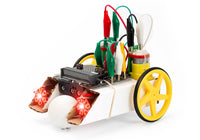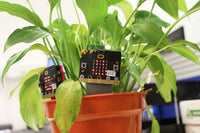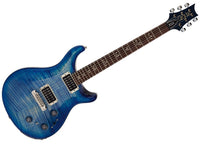







Buy locally from a partner
Bundled options
Buy the MI:power board with a BBC micro:bit
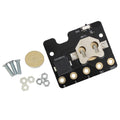 +
+
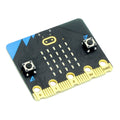
Description
Same Day Dispatch
- Orders placed online before 3:00pm Monday - Friday (excluding public holidays and our Christmas shutdown period) are always dispatched the same day provided the goods are in stock. If the goods are not in stock we will endeavour to contact you as soon as possible to discuss a dispatch date.
UK Deliveries
- If you live on the UK mainland and don't have any large materials or lithium batteries in your order it will cost £4.50 (£5.40 including VAT) if you spend less than £50 (£60 including VAT).
- If you spend between £50 and £200 (£60 - £240.00 including VAT, excluding large materials or lithium batteries) delivery is free to most locations, and £15 (£18.00 including VAT, excluding large materials or lithium batteries) to UK remote locations. For a list of postcodes that will be charged the remote location rate: remote area list.
- If you spend over £200 (£240.00 including VAT, excluding large materials or lithium batteries) delivery is free within the UK.
Rest of the world
- These orders are sent via FedEx, and the cost is dependant on the service you choose at checkout. Alternatively you can choose the free collection option and have your own courier collect it from us. International orders can only be shipped to the registered card address. Please note: International orders may be charged import duty dependant on local import laws and duty rates. These charges are usually billed to you directly from FedEx.
- Delivery times vary for international orders depending on the service selected and the destination. You can see the delivery time and cost at the shipping stage, or by using the shipping estimator from within the shipping basket.
Collection
- If you would like to collect your order, or use your own courier then there is an option you can select during checkout. We do not charge a packaging or handling fee for this service, and you will receive an email when your order has been processed, you can collect half an hour after receipt of this email.
Further Information
- For information about all of the delivery options we offer see full delivery details.
A wide range of BBC micro:bit resources, what it is, the editors and using the micro:bit
A wide range of BBC micro:bit resources, what it is, the editors and using the micro:bit
Break free from the shackles of your workspace with our range of microbit Case & Accessories Options. If you need to cut the cord from your laptop and go mobile...
Break free from the shackles of your workspace with our range of microbit Case & Accessories Options. If you need to cut the cord from...
The BBC micro:bit project is all about inspiring a new generation to get creative with digital technologies and code. At Kitronik we are focusing on facilitating both the Educational and...
The BBC micro:bit project is all about inspiring a new generation to get creative with digital technologies and code. At Kitronik we are focusing on...
In this tutorial, we are going to highlight how easy it is to use the BBC micro:bit as an Instrument Tuner. We will focus on making a Guitar tuner but you can...
In this tutorial, we are going to highlight how easy it is to use the BBC micro:bit as an Instrument Tuner. We will focus on making a...
For day ten of our 12 Makes of Christmas we made MI:power microbit Christmas Baubles. Follow our step by step guide and build your own out of laser cut parts. As always we've included...
For day ten of our 12 Makes of Christmas we made MI:power microbit Christmas Baubles. Follow our step by step guide and build your own out of laser cut...
Thank you for your message, you can do what you would need to do is press and hold the A and B buttons down and then turn the power switch on and offer and this should put the micro:bit into pairing mode as the power cycle acts like pressing the button on the back.
Best regards
Cullen
Thank you for your email, this will likely be because the mi:power has it's buzzer connected to pin 0 and the zip LEDs are also run from pin 0 on the halo. So the two are going to be conflicting. Also depending on how you have it all connected you may not have the GNDs twinned so that could cause further bugs and glitches.
The Halo needs more power than the Mi:power can run so you could not run it from the power board. The micro:bit will be fed power by the ZIP halo however so there should not be much need for a Mi:Power at that point.
I assume the reason you want both is for use with the buzzer on the Mi:Power? If this is the case then you can attach a buzzer to one of the breakouts on the Halo. Alternatively as a sneaky heads up in the near future there is a board that will combine LEDs and buzzers that might fill the niche you need.
Best Regards
Cullen
Thank you for your question as long as it's a 3V CR2032 coin cell it should fit. You would not be able to charge the kit while the coin cell is in the kit though to the back charge protection on the board in place for normal coin cells.
Best Regards
Cullen
It depends on the kit but most likely it will not be able to in my experience.
Best Regards
Cullen
This was actually a real hassle, as we had already cut our enclosures.So we almost gave up the project, until someone tried just the micro:bit + speaker alone, and identified the problem is in the MI:Power.
You mention the 'music function'? There are no music projects in your resources, except a pitch tone music tuner. So if I read this right, all you can do is Make Code is various pitch tones using pin 0 and pin GND, whereas the micro:bit can say, pronounce and sing using pin 0 and pin 1, with a battery pack or USB and micro:Python.
Is there any way to code the MI:Power piezo chip to recognize Micro:Python commands for speech/song:
from microbit import *
import speech (creates highly intelligible synthetic speech and song)
import music (just plays pitch tones like your Make Code)
Thank you for your question we have been doing a few tests ourside to double check for you.
We ran some tests with a Mi power to test the sound output with an App. We didn't do much calibrating with the app but it was still getting a reading of 68dB from the Mi Power board so it seems that is all okay.
We designed the mi power a couple of years back so we hadn't really done much with the micro python blocks for sound as most weren't written then. We tried run the codes from micro python with a speaker and the mi power. To be honest they were pretty similar when we tried them. The music worked fine through both when we used import music code.
We found the voice and speaking to be hard to understand on both. You could kind of make out what it was saying if you knew what you were going for but not really.
At the moment there are no plans to make alterations to the mi power as it is primarily intended as a small profile power source for the micro:bit to run from but I have passed all this feedback onto our R and D department.
Thank you for your question. Being plugged in while the mi power board should not cause an issue as the micro:bit contains a diode which will ensure it always draws from the highest voltage current, in this case the USB cable.
I would try swapping the mi power boards over and see if the issue follows the micro:bit or mi power board. The other thing to check is whether the micro:bit still draws power from a JST connected battery pack.
It is more likely to be a faulty micro:bit than mi power from what you have described as it is possible a regulator on the micro:bit has blown when it was connected to 5V. The checks above should help determine which piece of equipment is at fault.
Once you have established that I would recommend emailing the manufacturer for the product. If that was ourselves please email support@kitronik.co.uk and we will do our best to help.
Unfortunately that part is a buzzer that we surface mount with our in house machinery so is not suitable for general purpose, as you would need a pick and place machine.
Best Regards
Cullen
Hi Holger, With regards to the issue you are experiencing I can confirm that having the MI:power board attached won’t be the cause of this. There is a diode both on the MI:power board and on the micro:bit which ensure that power is only drawn from one source at a time. It will draw power from which ever source has the highest voltage. As such the issues you are experiencing are related to the micro:bit units themselves and it is possible you have received a damage unit(s). As such it would be best to contact the supplier you received these from, if it was ourselves please contact support@kitronik.co.uk.
Hi John, the easiest way to test this is to upload some simple code that turns P0 on and get this to output a frequency between 200Hz to 10kHz, this should then make the buzzer sound. You also need to ensure the battery is correctly inserted and that the screws are making contact with the micro:bit.
My gut reaction is that it would be a really bad idea to have two sources of power connected at once but I don't have the requisite knowledge to be able to judge and it could well turn out that I'm wrong.
Hi Graham, it shouldn’t break anything if the power is left turn on with the MI:power board and it is plugged into the USB port, it would be similar to if the battery cage was left plugged in when it was plugged into the PC. However it is recommended that only one device is used to power the micro:bit at any one time.
Hi Dan, There currently isn’t anyway to monitor the remaining charge in the coin cell battery. The easiest way would be to measure the voltage on the 3V pin on the MI:power board, using a multimeter. You may also notice the LED’s on the BBC micro:bit getting slightly dimmer.
Hi Mark, Unfortunately there isn’t any voltage protection built into the BBC micro:bit or the MI:power board, however there is a diode on the MI:power board which would lower the voltage slightly (0.1-0.2V). We however can’t guarantee that this would protect the BBC micro:bit as the power supply should be 3V’s.
Hi Dan, setting the pin high won’t do anything, as sound is a vibration so you would need to swap the pin from high to low very quickly. Using the music function is the easiest way to do this.
my USB port if the MI:power board is switched on?
I assume it is safe to power the micro:bit via the USB port if the MI:power inboard is switched off.
Hi Hugh, there shouldn’t be an issue, it would be a similar situation if you were using a battery cage to power the BBC micro:bit and left that plugged in while connecting to a PC. However it would be advisable to always turn the MI:power board off before connecting to the USB port.
If the BBC micro:bit was connected to the power board and was just used to scroll text across the LED mounted on the board it would last between 10-20 hours. Once you connect items to the outputs this would alter.
The case shown at the end is for the MI:power board and the BBC micro:bit, this is a new case that we are currently in the process of introducing and will hopefully be available on the website in the near future.
Ask a question about this product
Payment & Security
Your payment information is processed securely. We do not store credit card details nor have access to your credit card information.












